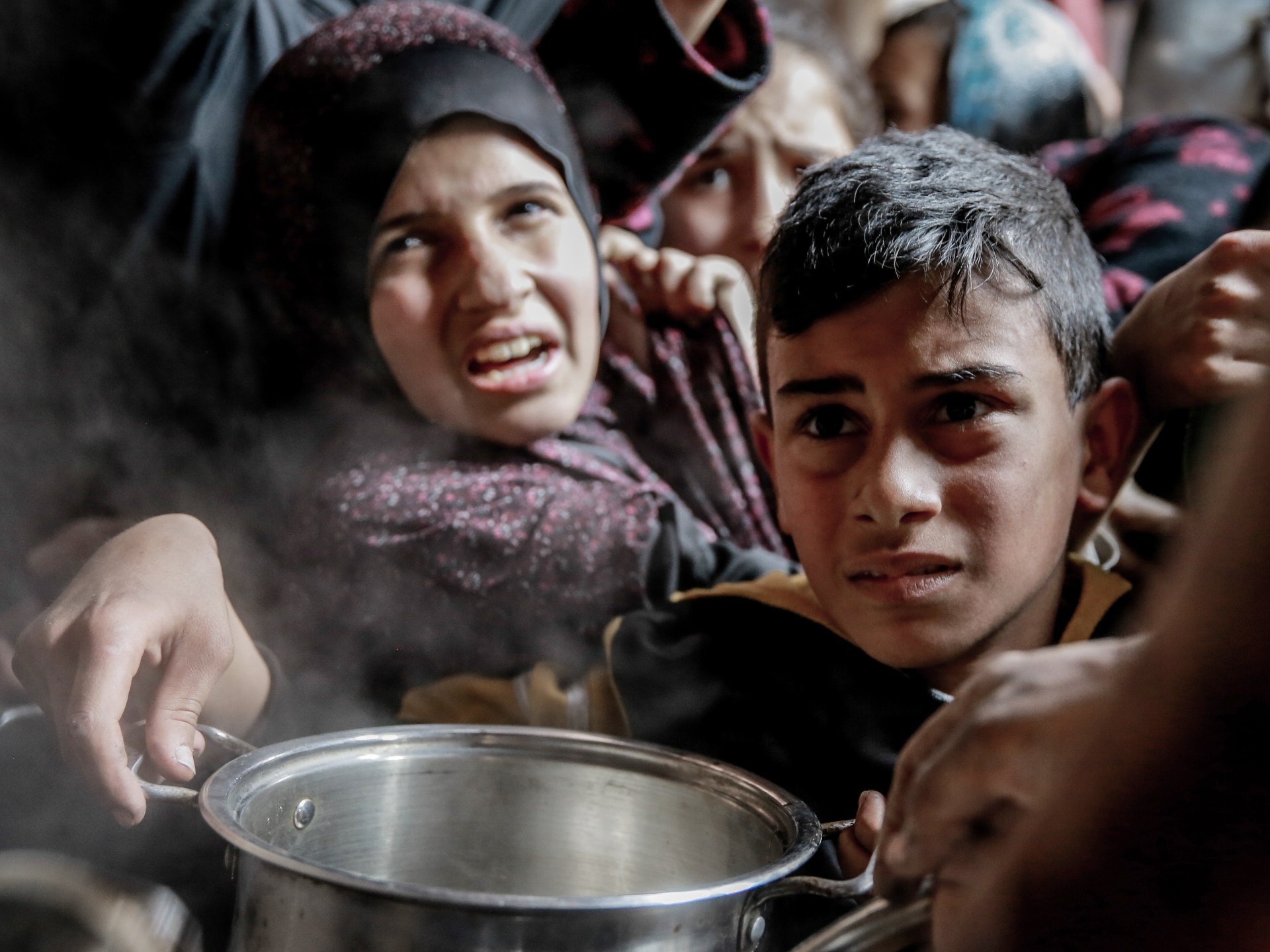Mapping Israeli protests since October 7 | Interactive News
Large-scale antigovernment protests are continuing across Israel as pressure grows for Prime Minister Benjamin Netanyahu to secure a ceasefire deal in Gaza.
On Monday, Israel’s largest trade union called for a general strike after the military recovered the bodies of six Israeli captives in southern Gaza.
This week’s demonstration marks some of the largest protests Israel has seen, with an estimated 500,000 people gathering in Tel Aviv and other cities.
Protests on the rise since October 7
According to data compiled by the Armed Conflict Location and Event Data Project (ACLED), between October 7, 2023 and August 30, there have been at least 1,240 demonstrations across Israel and they are becoming steadily more frequent.
Of the demonstrations analysed, fewer than 20 were classed as nonpolitical by ACLED.

Why are protests taking place?
Before October 7, protests were centred around the government trying to impost its power over the judiciary, which critics say helped Netanyahu avoid corruption charges.
Since October 7, nearly 86 percent of demonstrations have been due to the Israeli war on Gaza, with protesters calling for a ceasefire deal with Hamas to release the captives held in Gaza.
At least 494 protests have been directed against Netanyahu’s government, demanding early elections, largely due to its handling of the war.
Forty-eight protests were against including ultra-Orthodox Jewish men in the mandatory national military service.
Thirteen protests focused on restoring security to areas under attack by Hezbollah amid the ongoing escalation across the Israel-Lebanon border.

More than 90 captives are still held in Gaza, taken on October 7 by Hamas following an attack on Israel led by the group, during which about 240 people were captured and 1,139 killed.
In November of last year, negotiators secured a temporary ceasefire for seven days, giving hope to many of the families now demonstrating.
That ceasefire saw the release of 105 captives, in return for 210 Palestinian prisoners, mainly women and children, being held by Israeli forces.
However, other captives have died in Gaza and people blame Netanyahu, saying he does not want a ceasefire.
In July, a poll found that 72 percent of Israelis felt Netanyahu should resign over his failure to prevent the attack on October 7.
Where are protests taking place?
Of the 1,240 protests recorded since October 7, 336 were in Tel Aviv, accounting for a quarter of the total, followed by Jerusalem’s Judean Mountains with 201 events, and Hadera with 111.

Top protest locations:
- Tel Aviv – 336
- Judean Mountains – 201
- Hadera – 111
- Haifa – 93
- Southern Sharon – 72
- Western Sharon – 55
- Beersheba – 43
- Rehovot – 37
- Besor – 29
- Petah Tiqwa – 28
When were the protests the largest?
Of the 10 largest protests analysed between October 7 and August 30 eight took place in Tel Aviv.

On January 13, an estimated 120,000 people took to the streets in Tel Aviv. The 24-hour rally marked 100 days since Israel launched its war on Gaza and was attended by the families of captives still in Gaza and a former Supreme Court president.
![Protest at ‘Hostages Square’ in Tel Aviv marking 100 days since October 7, January 13, 2024 [Alexandre Meneghini/Reuters]](https://www.aljazeera.com/wp-content/uploads/2024/09/2024-01-13T180911Z_1934784371_RC26H5AOTBVS_RTRMADP_3_ISRAEL-PALESTINIANS-100DAYS-HOSTAGES-PROTEST-1725524256.jpg?w=770&resize=770%2C514)
On May 13, to mark Memorial Day, some 100,000 people gathered at the so-called “Hostages Square” in Tel Aviv to call for the release of the captives.
![Rally held in Tel Aviv under the slogan “Our Hope is Not Yet Lost” in support of releasing the hostages following October 7 attacks, May 13, 2024 [Shannon Stapleton/Reuters]](https://www.aljazeera.com/wp-content/uploads/2024/09/2024-05-13T190517Z_1826907623_RC2SP7A4Z4P4_RTRMADP_3_ISRAEL-PALESTINIANS-INDEPENDENCE-DAY-HOSTAGES-PROTEST-1725524350.jpg?w=770&resize=770%2C513)
A ceasefire deal looked promising in late May, but Netanyahu added additional non-negotiable conditions that fettered talks.
On June 1, about 120,000 protested at Kaplan Junction in Tel Aviv, calling for early elections over Netanyahu’s coalition government’s handling of the war.
![Protest against Israeli PM Netanyahu's government and to call for the release of hostages, in Tel Aviv, June 1, 2024 [Marko Djurica/Reuters]](https://www.aljazeera.com/wp-content/uploads/2024/09/2024-06-01T212742Z_869435683_RC2H28AGDPJR_RTRMADP_3_ISRAEL-PALESTINIANS-HOSTAGES-PROTEST-1725524380.jpg?w=770&resize=770%2C513)
This week’s latest protests organised by Israel’s main labour union, Histadrut, called for a nationwide strike, which brought the country to an economic standstill until a labour court ordered its end.
Throughout the war, Hamas has said it would release captives if Israel ends the war on Gaza, withdraws from the enclave and releases several Palestinian prisoners.
Israel has killed nearly 41,00 people in its war on Gaza.
Check out our Latest News and Follow us at Facebook
Original Source






